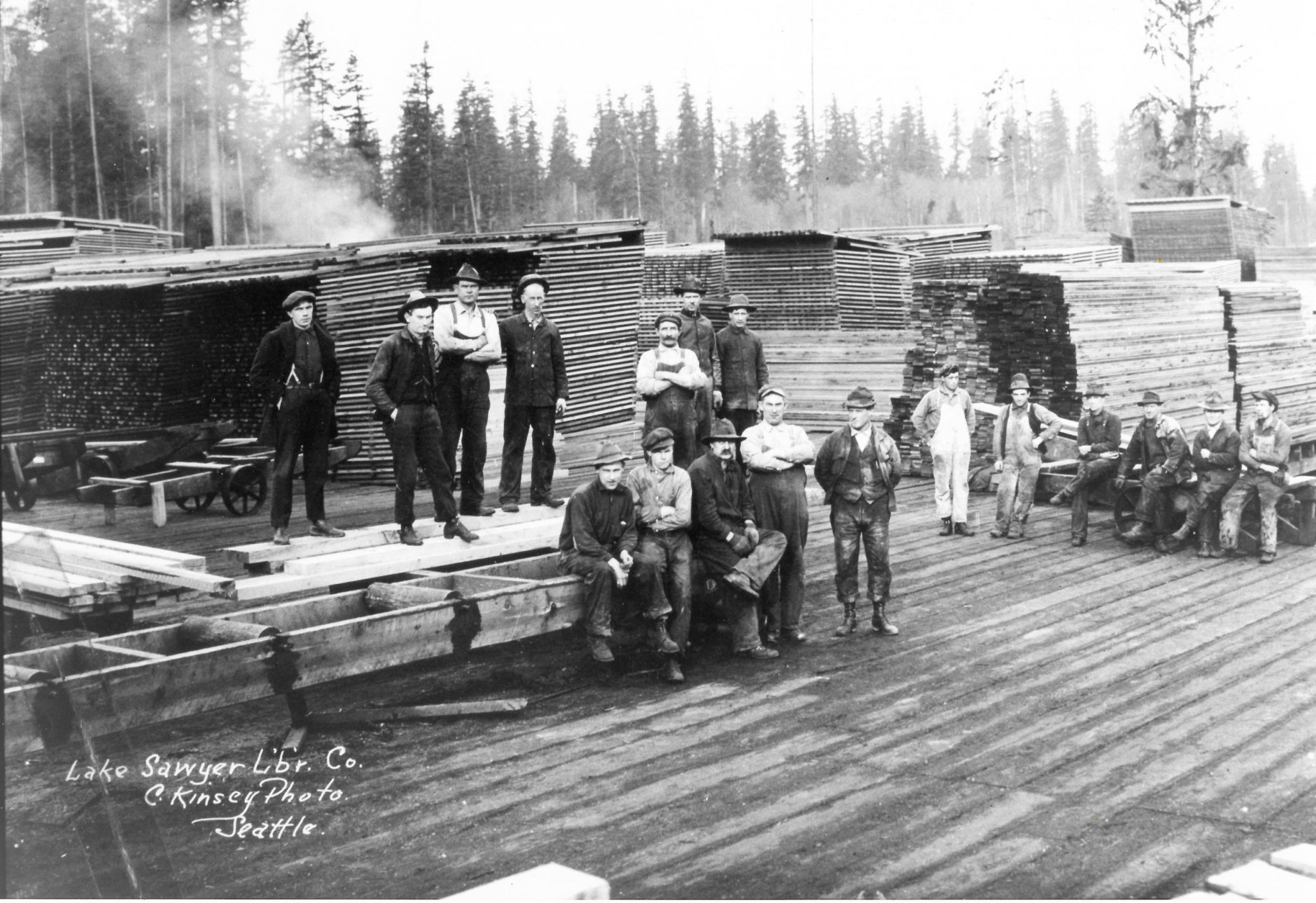Last week’s column about the Neukirchen brothers’ Lake Sawyer Lumber Co. told the story of logging and milling in the greater Black Diamond area from 1922 to 1934. The mill was located on the north shore of Lake Sawyer where 229th Ave. S.E. now provides access to nearly 50 lakefront and nearby homes. Today we examine the man who snapped a dozen or so photos of that operation, but also forestry operations throughout the Pacific Northwest. Clark Kinsey’s work as a photographer documented a vital aspect of the area’s logging and milling history. Raised near Snoqualmie, Washington, Clark first practiced photography in the early 1890s with his brothers Darius and Clarence. During the Yukon Gold Rush, Clark and Clarence operated a studio in Grand Forks, where they remained for several years.
About 1906, Clark Kinsey came back to Seattle with a contracting business operating throughout the Northwest until shortly before World War I. He then returned to photography and spent the rest of his career documenting the logging and milling camps and other forest related activities in Washington, Oregon, northern California, and British Columbia. Kinsey was known as the official photographer for the West Coast Lumberman’s Association, and it is believed that he made approximately 50,000 negatives until his retirement in 1945. Unfortunately, only a fifth of his images survived. The above photo shows 18 employees at the Lake Sawyer mill surrounded by lumber they manufactured using equipment capable of producing 45,000 board feet per day. In the foreground three men sit and two stand beside a roll conveyor comprised of wooden rollers and their regularly greased axles. This circa 1928 photo comes courtesy of JoAnne Matsumura, an Issaquah historian.







